
Brazil: Amazon and Salvador da Bahia,
July 2009
First Canoe Trip, A Morning Walk in the Jungle
Page 2 of 17
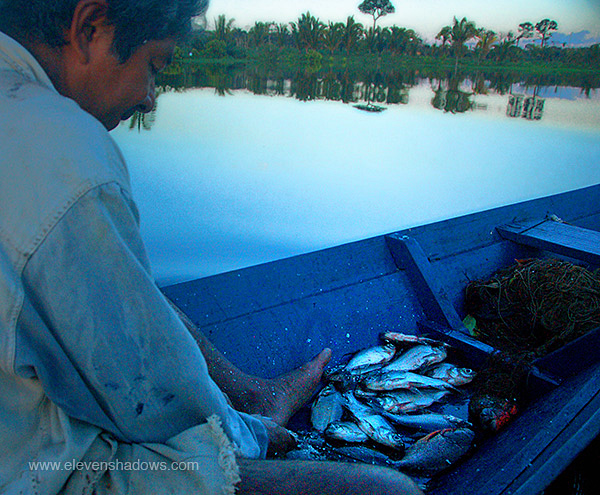 Freshly
caught fish from the Rio Mamori. Most people in this part of the
Amazon eat fish and fruit and
manioc wheat (made from cassava). Freshly
caught fish from the Rio Mamori. Most people in this part of the
Amazon eat fish and fruit and
manioc wheat (made from cassava). |
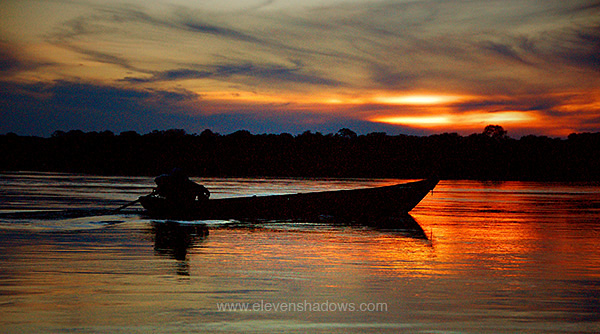 Sunset
over Rio Mamori. Sunset
over Rio Mamori. |
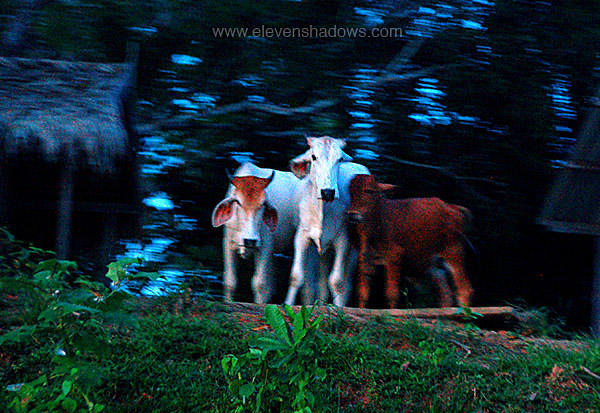 Amazon
cows looking out at the river life and another beautiful jungle sunset. Amazon
cows looking out at the river life and another beautiful jungle sunset. |
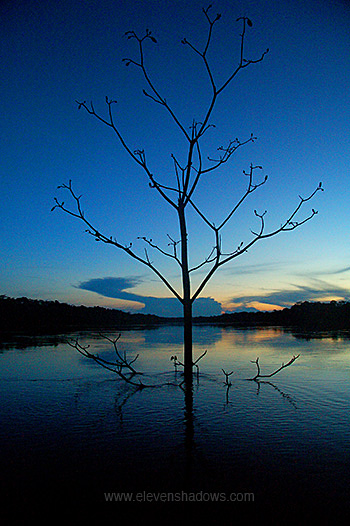 A
half-submerged tree pokes its top out of the Rio Mamori in front of the
Dolphin Lodge. Due to record flooding, the worst since 1953, many
things were submerged, including trees, roads, and homes. At one
point, the Rio Negro had risen almost 30 meters (over 88 ft.). A
half-submerged tree pokes its top out of the Rio Mamori in front of the
Dolphin Lodge. Due to record flooding, the worst since 1953, many
things were submerged, including trees, roads, and homes. At one
point, the Rio Negro had risen almost 30 meters (over 88 ft.). |
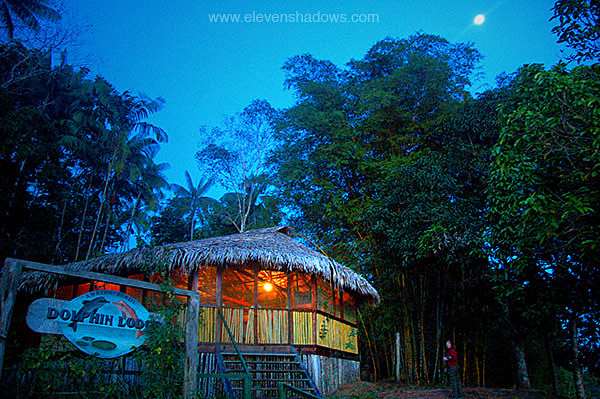 The
Dolphin Lodge lit by the jungle moon. The
Dolphin Lodge lit by the jungle moon. |
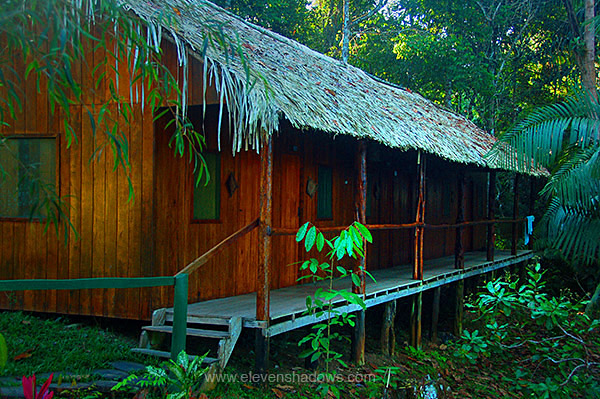 Our
rustic lodge, with mosquito nets and cold showers. Our
rustic lodge, with mosquito nets and cold showers. |
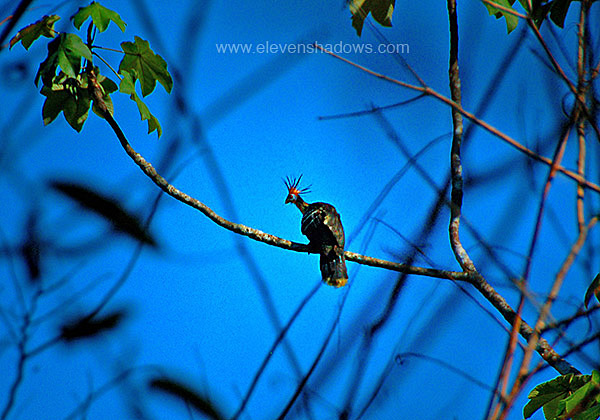 4
July Saturday - Our country's birthday. And what better way to
celebrate than with a walk in the jungle? 4
July Saturday - Our country's birthday. And what better way to
celebrate than with a walk in the jungle?After eating tapioca rolls (white rolls cooked in butter), we smeared on some citronella-based bug repellent, donned our long pants and long-sleeves shirts, and wandered into the jungle in the relative cool of the morning, Mo using his machete at times to hack his way through the path. He pointed out various hardwood trees, including rosewood, and towering Brazil Nut trees. |
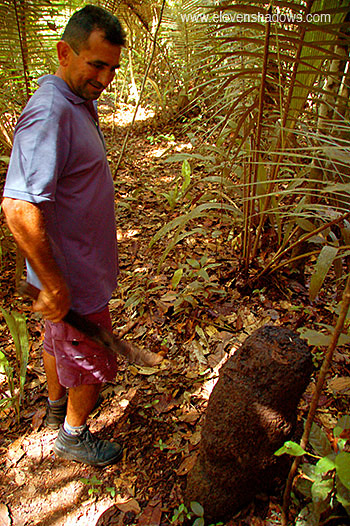 Mo
inspects a termite colony. Mo
inspects a termite colony. |
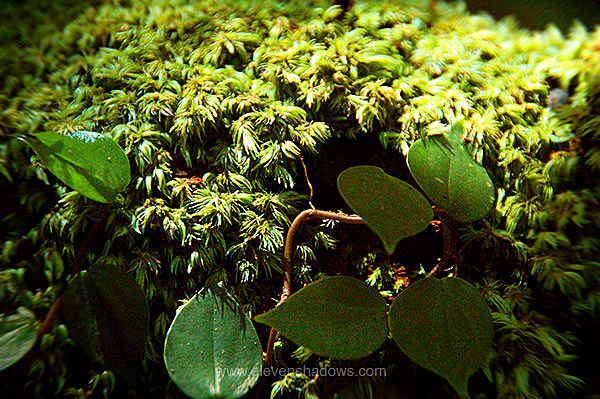 |
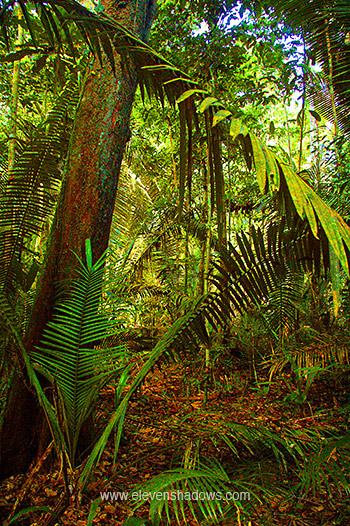 |
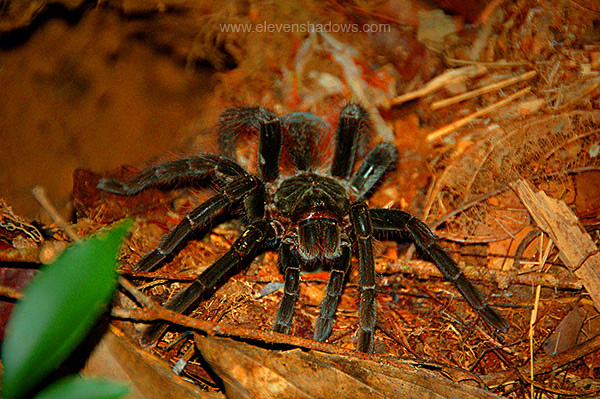 Mo
found a couple of nests of what he called monkey spiders, large hairy
spiders that burrowed in the ground. Mo
found a couple of nests of what he called monkey spiders, large hairy
spiders that burrowed in the ground. |
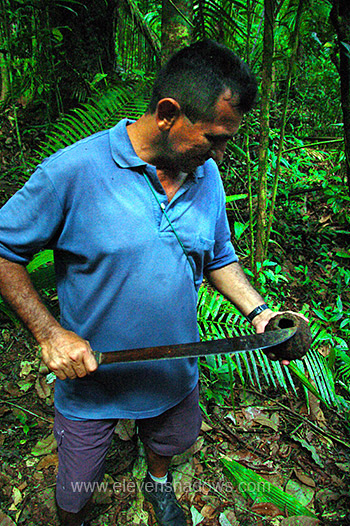 The
towering Brazil nut trees can live for 5-800 years, reaching 40-50 meters
(about 128-140 ft.) in height. This tree grows large woody pods the
size of a large grapefruit and can weigh 2.2 kg (over 4 pounds). When
they ripen, they fall to the ground, crashing through the jungle canopy like
a cannon ball. Stuffed inside each shell is 12-25 Brazil nuts, each in
its own shell. The
towering Brazil nut trees can live for 5-800 years, reaching 40-50 meters
(about 128-140 ft.) in height. This tree grows large woody pods the
size of a large grapefruit and can weigh 2.2 kg (over 4 pounds). When
they ripen, they fall to the ground, crashing through the jungle canopy like
a cannon ball. Stuffed inside each shell is 12-25 Brazil nuts, each in
its own shell.The nuts are high in oil, and will burn like a small candle if lit. In addition to eating, the nuts are used for cooking oil, lamps, soap, and livestock feed.
|
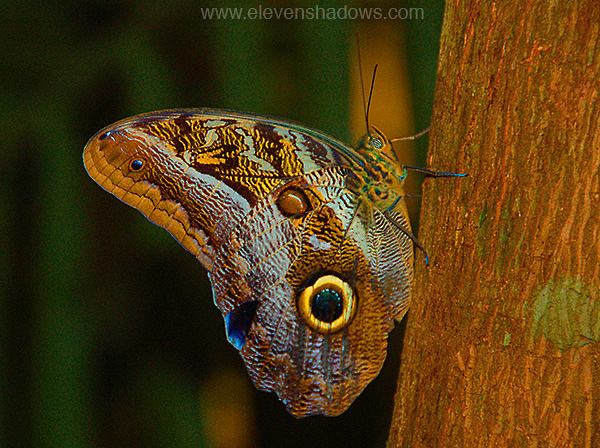 A
beautiful butterfly with an eye-like pattern for warding off potential
predators. This butterfly was probably about 10-12cm (4-5 inches) in
length, and allowed us to get rather close before fluttering off the tree
trunk. A
beautiful butterfly with an eye-like pattern for warding off potential
predators. This butterfly was probably about 10-12cm (4-5 inches) in
length, and allowed us to get rather close before fluttering off the tree
trunk.The walk was fascinating, the jungle beautiful, and the mosquitoes relentless. The citronella-based herbal repellent was minimally effective, and worse, came off with our sweat. Mosquitoes buzzed at our ears. They bit through Lisa's pants. We quickly slathered on DEET, which worked much better. |
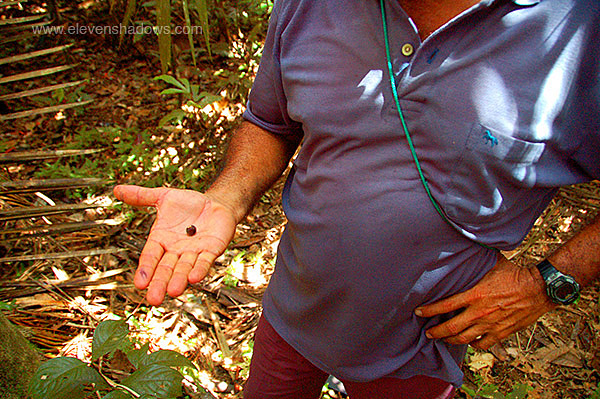 Mo
showed us an açaí berry, which need to be processed fairly quickly from their
natural state to be able to eat or drink. Mo
showed us an açaí berry, which need to be processed fairly quickly from their
natural state to be able to eat or drink.During the walk, we saw howler and capuchin monkeys in a primary growth forest before wandering back through a younger and denser secondary growth forest that Mo's grandparents had chopped down for harvesting manioc. Mo says that it takes 100-150 years for it to be considered a primary growth forest again. |
Brazil: Amazon and Salvador da Bahia, July 2009
Page 2 of 17
1 2 3 4 5 6 7 8 9 10 11 12 13 14 15 16 17
EXTRA: Lisa's Photos and Videos of the Amazon
Eleven Shadows Travel Page
Contact photographer/musician Ken Lee